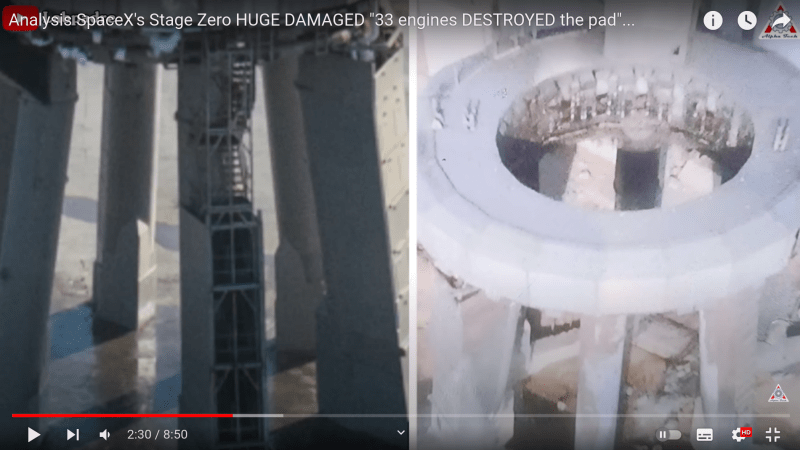Saikee…
"According to the simple Newton's law I would have expected the vertical thrust action to send off SpaceX could only materialise when there was an equal and opposition reaction provided by the apron concrete slab."
That's not how rockets work. Rockets generate their own thrust and do not need a launch pad to generate the reaction (or an atmosphere, as the rocket deniers claim). As Murph said, "the reaction force for a rocket in flight comes from the mass of expanding gas being pushed out of the nozzles."
Think about it: once the rocket lifts off, the only "connection" between the launch pad and the rocket is a stream of outbound, unconfined, compressible fluid (exhaust gas) and you will not be able to transmit a thrust force through that exhaust gas. And, as the rocket climbs, that "connection" becomes more and more tenuous before it vanishes completely.
Here is an easy way to understand how rockets generate thrust, although the analogy is not complete. We will use a spherical balloon to mimic the combustion chamber in a rocket. First, blow up the balloon and hold the nozzle closed. Next, make a free-body diagram of internal air pressure inside the balloon. Obviously, the vector forces completely balance around the entire sphere, so there is no net thrust in any direction and thus no acceleration. For this simple example, we are ignoring the external air pressure (because it also balances and because there is none in space) the tension forces in the surface of the balloon (because they also balance), and the mass of the balloon and the enclosed air. Finally, open the nozzle of the balloon and redraw the free-body diagram. As you can see, a small area of the balloon's surface, opposite the nozzle, now has no opposing force to balance with. It's the force on this unbalanced area that generates the thrust that will propel the balloon when you let go.
There's more to it than this, of course, but this is a good way to visualize how a rocket works. If you do an on-line search for things like "rocket free-body diagram", "Tsiolkovsky rocket equation", etc. you can find a wealth of information about how rockets work. Wikipedia's article about the Tsiolkovsky rocket equation is pretty good and shows derivations based on the momentum balance and based on forces. For an entertaining approach to rocketry in general, check YT for Don Pettit's TED talk, "The Tyranny of the Rocket Equation."
============
"Is it the only lesson of history that mankind is unteachable?"
--Winston S. Churchill


![[surprise] [surprise] [surprise]](/data/assets/smilies/surprise.gif)